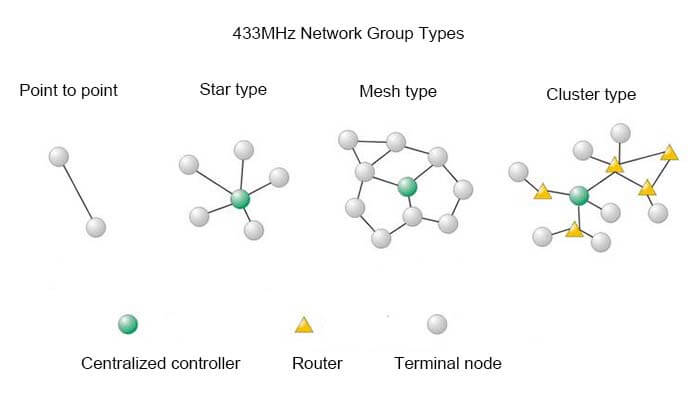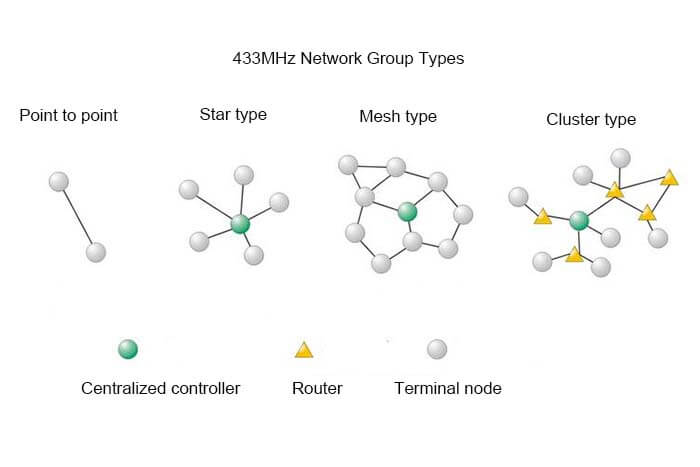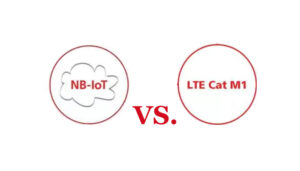In IoT applications, BLE frequency, 433MHz frequency, Wi-Fi frequency, 2.4GHz frequency, GPS frequency, GPRS frequency, LoRa frequency, NB-IoT frequency, etc. are often mentioned technologies. Among them, the 433MHz frequency has a wide range of applications but is not well known. In this article, we will start with a few basic knowledge points to introduce 433MHz frequency.
Wireless radio frequency is a kind of non-contact automatic identification technology that emerged in the 1990s of the 20th century and is a kind of wireless communication technology with close distance, low complexity, low power consumption, low data rate, and low cost.
The advantage of this technology is part of the product without rewiring, the use of point-to-point radio frequency technology, to achieve control of home appliances and lighting, installation, and setup are relatively convenient, mainly applied to achieve control of some specific appliances or lighting, and the cost is moderate.
Wireless RF card is divided into low-frequency RF cards, medium-frequency RF card, and high-frequency RF card according to the carrier frequency.
What is 433 MHz frequency?
433 MHz frequency is a wireless radio band on which compatible household devices send signals. 433MHz frequency is a commonly used frequency band for all types of equipment that require little power.
433MHz frequency wireless transceiver module, using high-frequency RF technology, so is also called RF433 RF small module.
Its single IC RF front-end produced by all digital technology and ATMEL’s AVR microcontroller can transmit data signals at the high-speed micro transceiver, packetization, error detection, and error correction processing of wireless transmission data.
Components are industrial-grade standard, stable and reliable work, small in size, and easy to install. It is suitable for security alarms, wireless automatic meter readings, home, and industrial automation, remote control, wireless data transmission, etc.
Main 433MHz frequency technical specifications
- Communication mode: AM
- Operating frequency: 433MHz
- Frequency stability: ±75KHZ
- Transmitting power: ≤500MW
- Static current: ≤0.1uA
- Emission current: <35mA
- Operating voltage: 3.6~5.5V
- Modulation mode: FSK
- Working channel: 32 frequency bands to choose
- Transmission distance: small power 500m, high power 800m
Main 433MHz frequency features
- Interface mode: 232/485/TTL/USB serial port, format 8N1/8E1/8O1 optional
- Accept high sensitivity, reliable transmission distance up to 350m
- Modulation by FSK, support OOK/ASK/MSK modulation
- Carrier frequency 433 MHz, can be customized 169MHz/230MHz/315MHz/868MHz/915MHz and other ISM frequency bands
- Provide PC configuration software, you can flexibly set various parameters of the module
- Serial port rate: 4800/9600/19200/38400/57600/115200bps
- Air rate: 5K/10K/20K/30K/40K/50K/77K/100K/150K/200K/250Kbps
- Power consumption and sleep power-saving mode: power <10 MW, receive current <25mA, transmit current <35mA, sleep current <8uA
- Support multiple word network group work mode, network address configuration of the same module can only communicate with each other
- With relay function, relay nodes can be selected for transmission, effectively expanding the transmission distance
- Support transparent transmission mode and address transmission mode can form point-to-point, point-to-multipoint, point-to-multipoint, and other wireless communication networks
- 3.3V or 5V DC power supply can be selected
What is the 433MHz frequency advantage?
Nowadays, the 433MHz module has been widely used, compared with 2.4GHz technology, it has its own unique advantages, such as long-distance, strong penetration, excellent bypass ability, etc. It is suitable for small data volume applications, such as sensor data collection, various automation control, etc.
What is the 433MHz frequency network type?
433MHz RF technology has been developed and derived from various complex applications such as MESH networking, ultra-low power standby, etc. through the high-speed development in recent years, and the advantages of various chips have been fully utilized.

What is the 433MHz frequency application?
The 433MHz frequency applications are:
Wireless POS, PDA, and other wireless intelligent terminals;
Fire fighting, security, wireless monitoring of equipment in machine room, access control system
Traffic, weather, environmental data collection;
Intelligent district, building automation, parking lot vehicle management;
Wireless control of intelligent meters, PLC, and other industrial automation;
Logistics tracking, warehouse inspection;
Oil field, gas field, hydrology, mining data collection;
433MHz wireless data transmission is widely used in vehicle monitoring, remote control, telemetry, small wireless network, wireless meter reading, access control system.
Industrial data acquisition systems, wireless tags, identification, non-contact RF smart cards, small wireless data terminals, security and fire prevention systems, wireless remote control systems.
Bio-signal acquisition, hydro-meteorological monitoring, robot control, wireless 232 data communication, wireless 485/422 data communication, digital audio, digital image transmission, etc. in the field.
Application of 433MHz frequency in smart home
1. Light control
The Wireless RF lighting control system consists of smart panel switches and dimmers. The dimmers are used to send and receive command signals, and the commands are transmitted by radio instead of through the home’s power lines.
Each panel switch is equipped with a different remote control identification code. These codes utilize 19-bit identification technology, allowing the receiver to accurately identify each command. Even if neighbors use them at the same time, there is absolutely no transmission error due to interference from their remotes.
2. Wireless Smart Socket
Wireless smart socket series mainly realize the power remote control of non-remote control appliances (such as water heater, electric fan, etc.) through wireless RF technology, which not only adds wireless remote control function to these appliances but also saves energy and ensures safety to the maximum extent.
3. Information Appliance Control
Information appliance control is a multi-functional remote control system that integrates infrared control and wireless control. It can control up to five kinds of infrared devices (such as TV, air conditioner, DVD, amplifier, curtain, etc.) and wireless devices such as switches and sockets.
The information appliance controller can transfer the codes of ordinary infrared appliances’ remote controls by way of learning to replace the original appliance remote controls.
At the same time, it is also a wireless remote control, which can transmit the control signal of 433.92MHz frequency, so it can control the smart switches, smart sockets, and wireless infrared transponders in this frequency band.
The smart home is one of the key application areas of the Internet of Things, and the two main technologies currently used are ZigBee and Z-Wave. However, ZigBee technology is limited by power consumption and has poor penetration power, which is easily affected by furniture or walls; Z-Wave can solve the problem of power consumption limitation, but it is not an open standard and has the problem of system compatibility.
Based on the above problems, 433MHz wireless RF technology has been increasingly requested to be applied to realize smart home solutions.
The 433MHz wireless transceiver module antenna is a short-range wireless communication module antenna to realize the transmission of sensor and terminal information in the smart home system.
Besides the What is 433MHz Frequency article, you may also be interested in the below articles.




